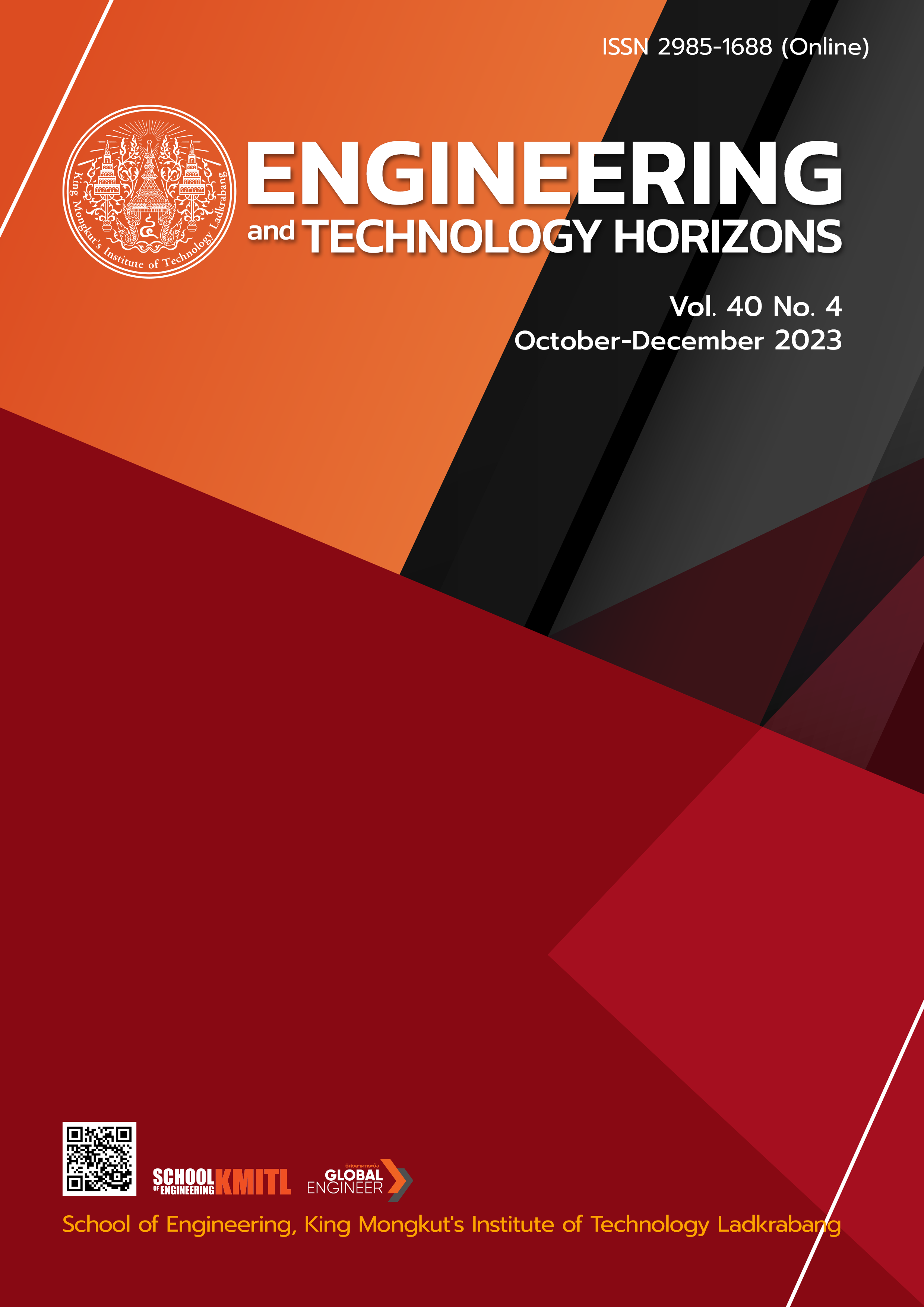The Walkability In Bangkok: Case Studies of Bang Sue District
DOI:
https://doi.org/10.55003/ETH.400408Keywords:
Ability to walk, Walkability index, Pedestrians, Bang Sue DistrictAbstract
This research was conducted to study walking ability in the Bangkok study area, specifically in the Bang Sue District. The study area is more developed due to the activation of the Bang Sue Central Station red line train and the increasing facilities for various forms of transportation. There is also a large number of pedestrians in the study area. Therefore, this study assessed the ability to walk in the overall network of the area using the (Walkability Index, WI). This method includes factors and physical problems faced by pedestrian users in the affected area. The results of the study can be used to improve and develop the ability to walk in the study area for a better future.
References
T. Sookprecha, “Living Street,” thaipublica.org. https://thaipublica.org/2013/04/living-street (accessed: Feb. 13, 2022).
H. Krambeck amd J. Shah, “The Global Walkability Index: Talk the Walk and Walk the Talk,” in Better Air Quality Conference (BAQ), Yogyakarta, Indonesia, Dec. 13–15 2006. [Online]. Available: https://www.gtkp.com/document/the-global-walkability-index
J. Leather, H Fabian, S. Gota and A. Mejia, “Field Walkability and Pedestrian Ratings,” in Walkability and Pedestrian facilities in Asian Cities, 17th ed. Manila, Philippines: Asian Development Bank, 2011, ch. 4, pp. 10–23,
Dr. Suthin Chanaboon, “Inferential Statistics,” in Statistics and data analysis in preliminary research, Khon kaen, Thailand: R2R Khon kaen Provincial Public Health Office, 2017, ch.6, sec. 4.3, pp.148–160
M. Nilles and I. Kaparias, “Investigating the relation of highway design standards with network-level walkability: The case study of Luxembourg,” International journal of Transportation Science and Technology, vol. 7, no. 4, pp. 254–263, 2018, doi: 10.1016/j.ijtst.2018.08.001.
P. Putpakdee, “Assessment of Walkability in Communities: Case Studies of Hat Yai and Patong,” M.E. Thesis, Dept. Civil Eng., Songkla Univ., Songkla, Thailand, 2018.
C. Luadsakul, “The Study of Walkability Index: A Case Study of Nakhon Ratchasima Municipality,” M.E. Thesis, Dept. Transp. Eng., Suranaree Technology Univ., Nakhon Ratchasima, Thailand, 2012.
Bangsue District Office, “About Bang Sue District.” webportal.bangkok.go.th. https://webportal.bangkok.go.th/bangsue/index?cover=1. (accessed: Feb. 15, 2022).
S. Gota, H. G. Fabian, A. A. Mejia and S. Punte, “Walkability Surveys in Asian Cities,” in Walk21 conference, Hague, Netherlands, Nov. 17–19, 2010, pp. 1–20 [Online]. Available: https://www.ictct.net/wp-content/uploads/23-Hague-2010/ictct_document_nr_663.pdf
Walk Score, “Walk Score Methodology”, walkscore.com, https://www.walkscore.com/methodology.shtml (accessed: Feb. 10, 2022).
Bangkok road standard, no. 14, Public Works Department, Bangkok, Thailand, 2022.
Downloads
Published
How to Cite
Issue
Section
License
Copyright (c) 2023 Faculty of Engineering, King Mongkut’s Institute of Technology Ladkrabang

This work is licensed under a Creative Commons Attribution-NonCommercial-NoDerivatives 4.0 International License.
The published articles are copyrighted by the School of Engineering, King Mongkut's Institute of Technology Ladkrabang.
The statements contained in each article in this academic journal are the personal opinions of each author and are not related to King Mongkut's Institute of Technology Ladkrabang and other faculty members in the institute.
Responsibility for all elements of each article belongs to each author; If there are any mistakes, each author is solely responsible for his own articles.






